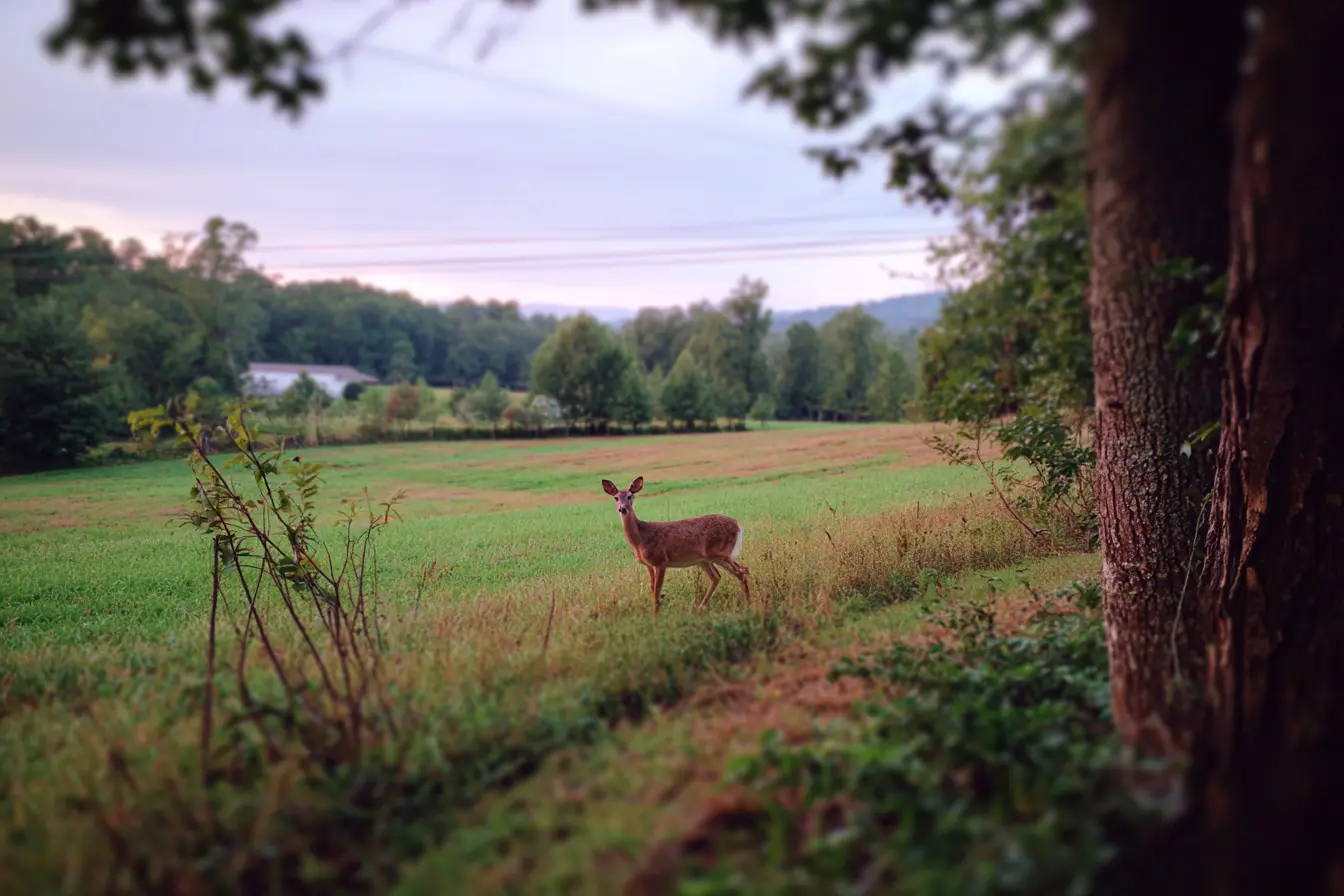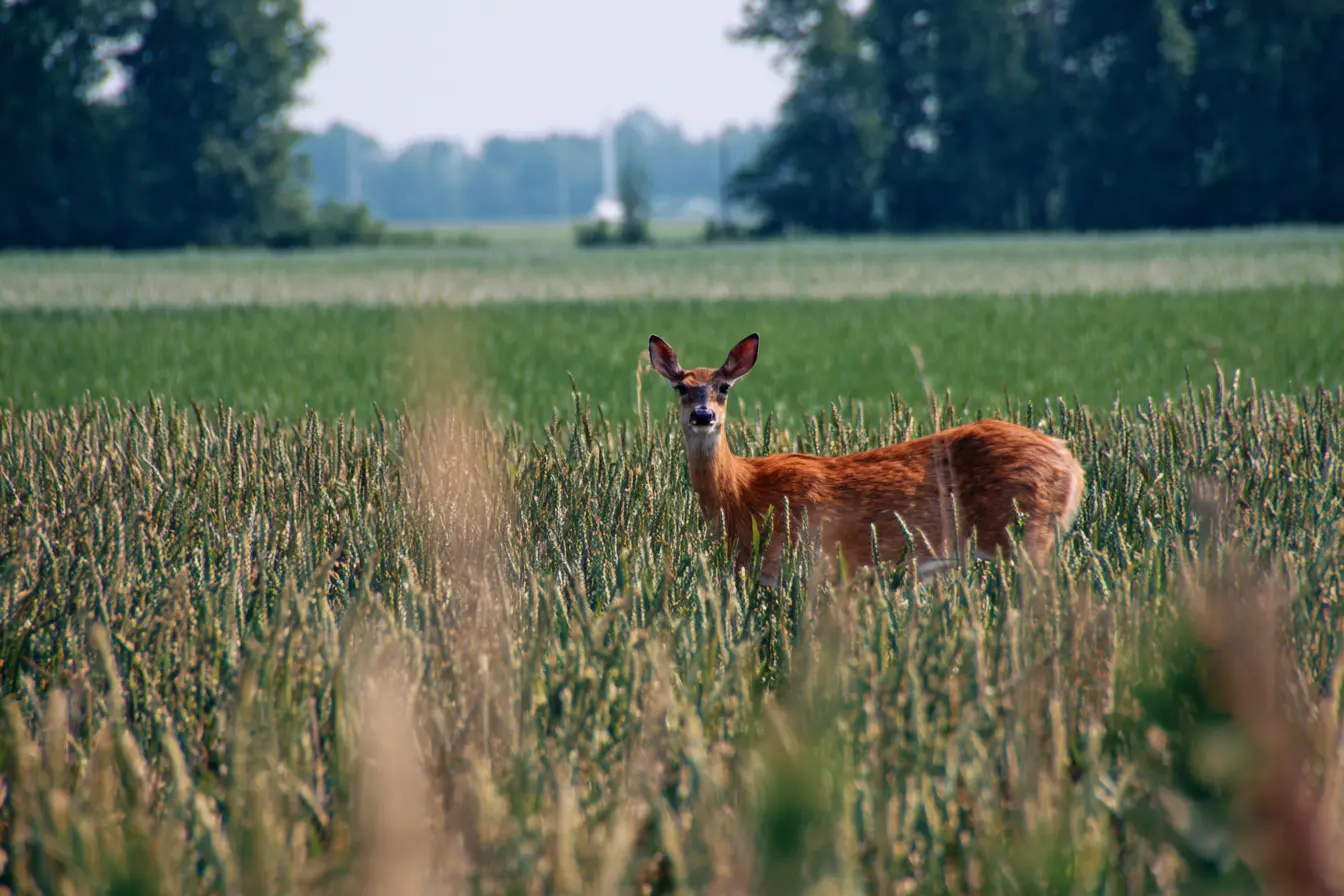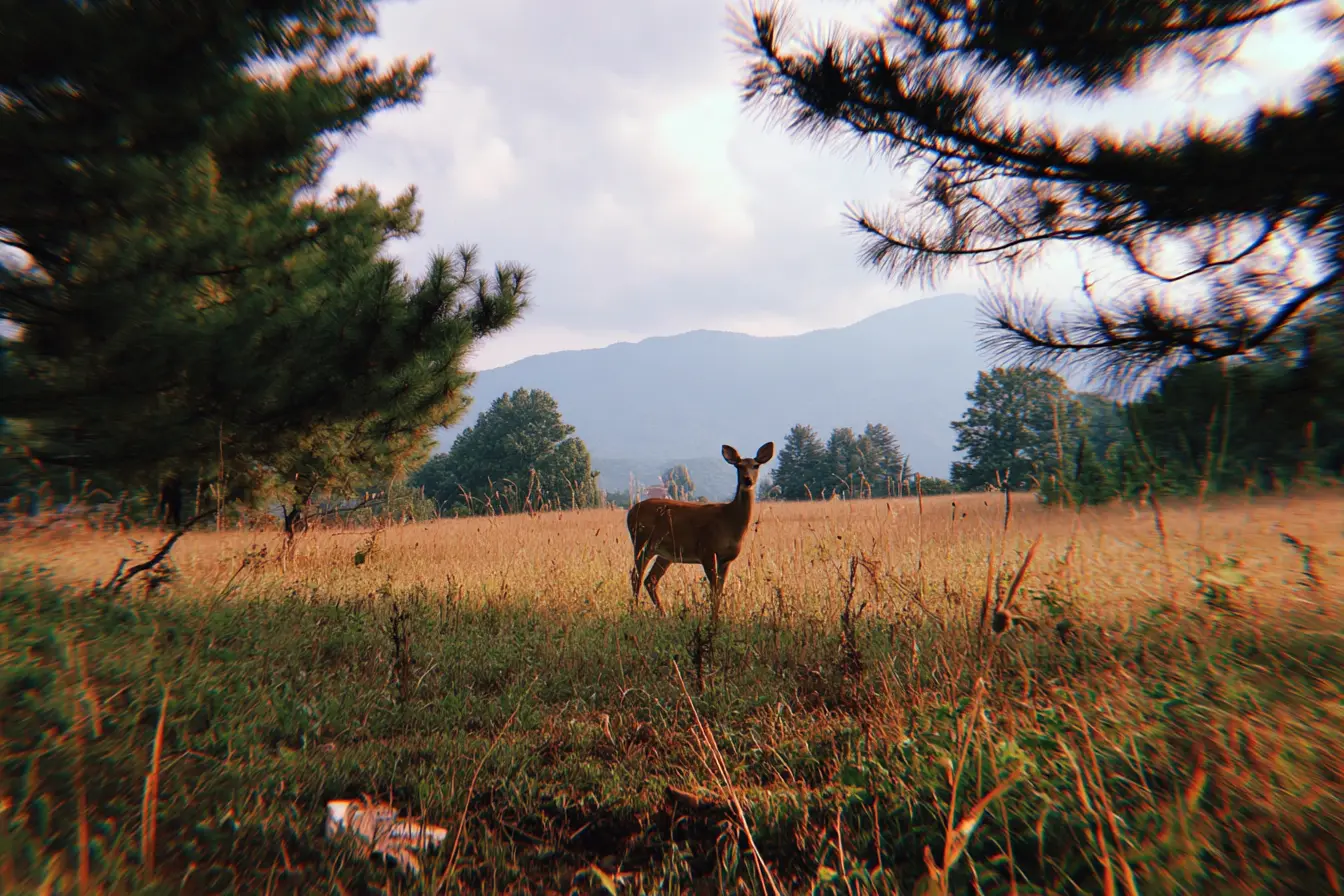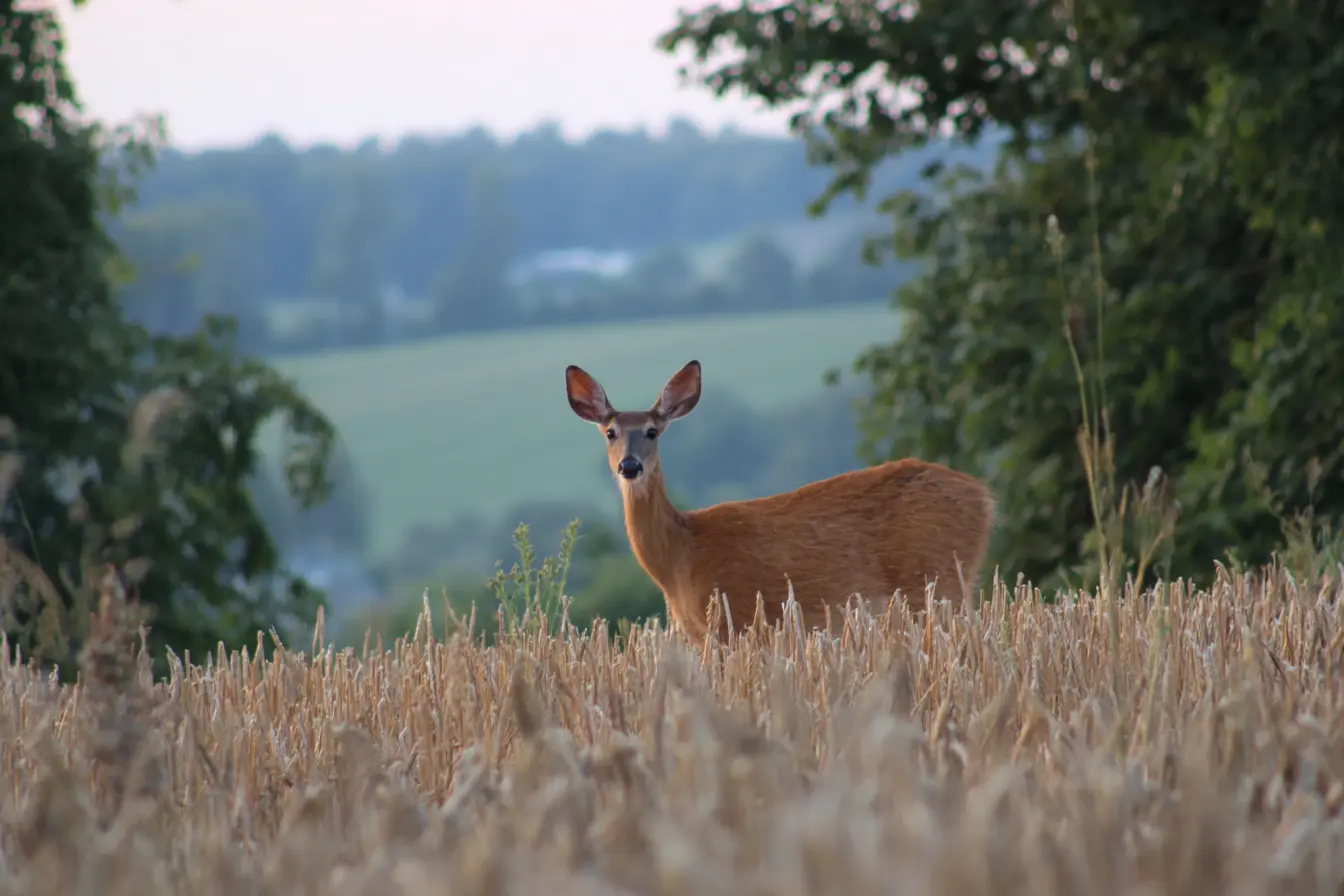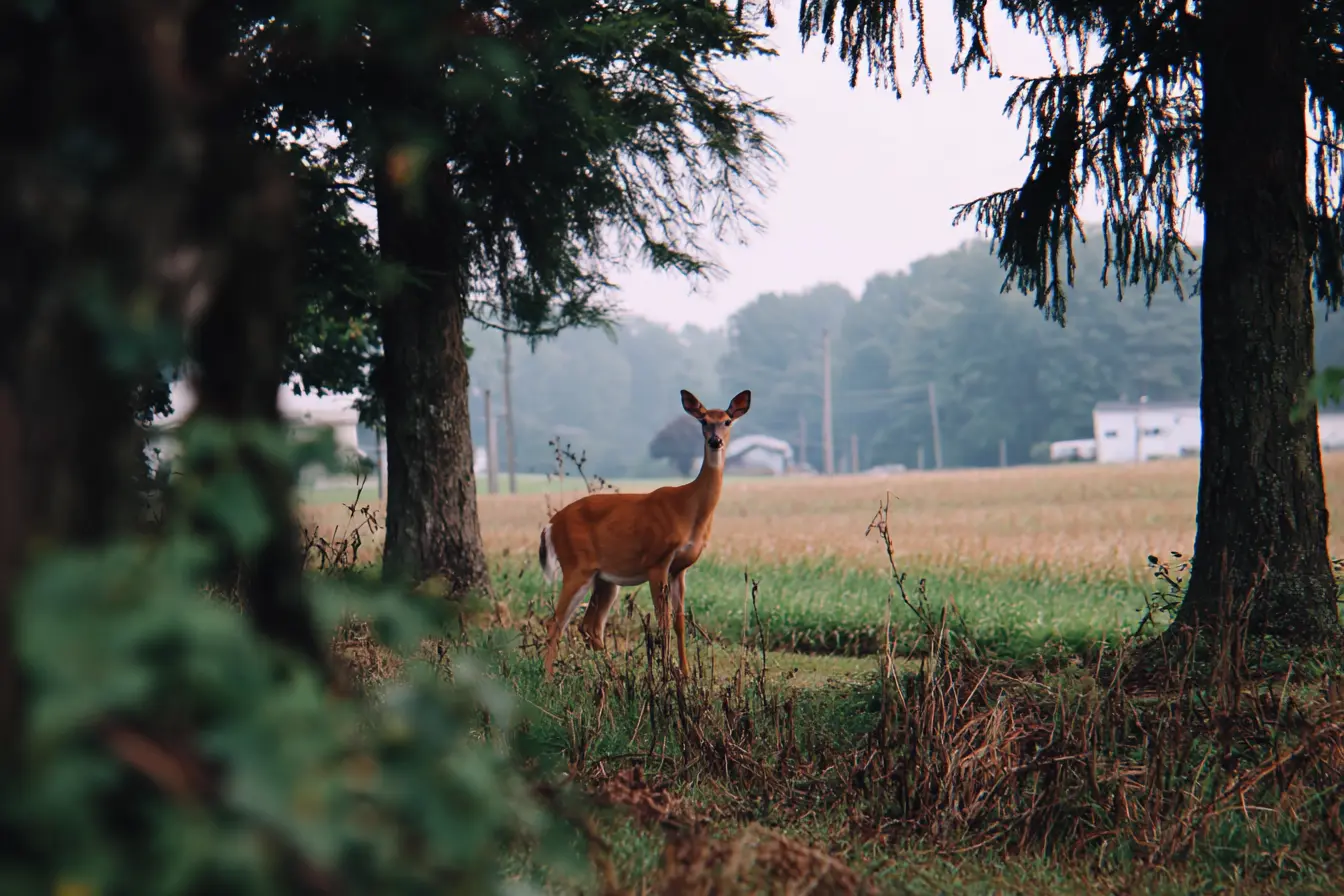
Deer and Chronic Wasting Disease in the UK: A Growing Concern
The image of wild deer is woven into the fabric of the British countryside. From the highland red deer of Scotland to the muntjac browsing in English woodlands, deer are an integral part of our natural heritage. However, as we work to manage growing deer populations and their impacts, there is one disease in particular that has become a focus of concern: Chronic Wasting Disease, or CWD.
In this post, we’ll explore what CWD is, why it poses a threat to wild deer, the current status of the disease in the UK, and what farmers, landowners and conservationists can do to monitor and mitigate this risk.
Understanding Chronic Wasting Disease
Chronic Wasting Disease is a fatal neurological condition that affects deer, elk and other cervids. It is caused by an abnormal, misfolded protein called a prion, which triggers a cascade of damage in the brain and nervous system.
Once infected, deer develop progressive neurological symptoms including:
- Significant weight loss
- Stumbling or poor coordination
- Drooping ears and head
- Increased salivation and urination
- Behavioural changes, including lack of fear
These symptoms typically develop over several months, eventually leading to death.
CWD is part of the same family of diseases as BSE (mad cow disease) and scrapie in sheep. Like these conditions, it is always fatal and can spread rapidly within deer populations.
The Global Picture
CWD was first identified in the United States in the 1960s. Since then, it has spread to many states in North America and has also been found in parts of Canada, Norway, Sweden and Finland. The disease is highly contagious among deer populations, with prions persisting in the environment for years in contaminated soil, water and vegetation.
In areas where CWD has become established, it has had devastating effects on wild deer populations, disrupting ecosystems and causing serious concerns for deer management and conservation.
CWD in the UK: Current Status
At present, there have been no confirmed cases of Chronic Wasting Disease in wild or captive deer in the UK. This is an important point of reassurance for farmers, landowners and wildlife enthusiasts.
However, the detection of CWD in reindeer and moose in Norway and its continued spread in North America highlight that the disease is a real and present threat to European deer populations. The UK government and its scientific agencies take this risk seriously and have put in place a range of measures to reduce the likelihood of CWD reaching our shores.
Preventative Measures and Surveillance
To keep the UK free of CWD, the following key measures are in place:
- Import restrictions: Strict rules limit the import of high-risk deer parts such as antlers with skull plates, whole deer carcasses, and certain trophies from CWD-affected areas.
- Surveillance programmes: The Animal and Plant Health Agency (APHA) and other agencies carry out regular testing of wild deer found dead or culled as part of disease surveillance programmes.
- Monitoring in Europe: The UK is part of wider European surveillance efforts, sharing information and best practice with neighbouring countries to ensure early detection if CWD were to arrive in Europe.
These steps are critical to keeping CWD out of the UK and protecting our deer populations.
What Farmers and Landowners Should Know
Although there have been no UK cases, awareness is essential. Here’s what farmers and landowners should consider:
- Stay informed: Keep up to date with the latest information on CWD from Defra, the British Deer Society and veterinary authorities.
- Practice good biosecurity: If you handle imported deer parts (for example, antler trophies), ensure they comply with UK import rules to minimise disease risk.
- Collaborate with deer managers: Work with professional stalkers and deer managers to maintain healthy and sustainable deer populations on your land, which is critical for reducing disease vulnerability in general.
Why Early Action Matters
The challenge with CWD is that it can spread silently for years before obvious symptoms appear. Prions shed by infected animals can remain in the environment for a long time, making control once the disease is established very difficult.
This makes early detection and ongoing vigilance essential. The absence of CWD in the UK is a success story of proactive management, but it requires ongoing attention to stay that way.
Conclusion: A Shared Responsibility
Chronic Wasting Disease represents one of the most serious disease threats facing deer populations worldwide. While it is reassuring that the UK is currently free of CWD, the situation in other parts of the world shows how quickly the disease can spread and how devastating it can be.
Farmers, landowners, stalkers and conservationists all have a shared role in keeping CWD out of the UK. By staying informed, supporting surveillance efforts and working together, we can help ensure that our wild deer remain healthy and continue to enrich our landscapes for generations to come.
Related Vets
Vets near you
Speciality vets
- Aquatics vet specialists
- Birds vet specialists
- Camelids vet specialists
- Cats vet specialists
- Cattle vet specialists
- Deer vet specialists
- Dogs vet specialists
- Equines vet specialists
- Exotic vet specialists
- Goats vet specialists
- Pigs vet specialists
- Poultry vet specialists
- Sheep vet specialists
- Small Mammals vet specialists
- Wild vet specialists
